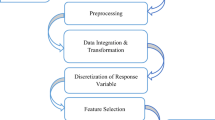Abstract
With the rapid development of Internet technology, the data information on the network has also increased in an unprecedented amount. However, the emergence of this phenomenon makes it difficult for network users to find information of great value to themselves in the massive data. Therefore, score prediction is very important. It is an urgent task to establish an effective and practical scoring prediction model. This paper took movie score prediction as the key content and established a movie score prediction model based on convolutional neural network. The experimental result that the ten-layer convolutional neural network had the best performance was obtained through experiments; therefore it was taken as the main research subject for prediction. It was found that the accuracy of the test set of the ten-layer convolutional neural network was always around 56%, the accuracy of training set increased with the increase of training times. It was compared with the traditional decision tree prediction model. The accuracy, mean square error and root mean square error of the convolutional neural network prediction model were 56.78%, 0.7896 and 0.889 respectively; the prediction values were close to the actual values. Therefore the prediction model based on convolutional neural network was better. This study provides a new mode for the prediction of movie score.




Similar content being viewed by others
REFERENCES
Diao, Q., Qiu, M., Wu, C.Y., et al., Proceedings of the 20th ACM SIGKDD International Conference on Knowledge Discovery and Data Mining—KDD. 14-Jointly Modeling Aspects, Ratings and Sentiments for Recommendation, 2014, pp. 193–202.
Ayşegül, Ö.E. and Sert, M., Movie rating prediction using ensemble learning and mixed type attributes, Sign. Process. Commun. Appl. Conf., Antalya, 2017.
Zhu, J., Guo, Y., Hao, J., et al., Gaussian mixture model based prediction method of movie rating, IEEE Int. Conf. Comput. Commun., Chengdu, 2017.
Shahjalal, M.A.A., Ahmad, Z., Arefin, M.S., et al., A user rating based collaborative filtering approach to predict movie preferences, 2017 ICEICT, Khulna, 2017.
Mei, B., Cheng, X., Xing, X., et al., Personal information prediction based on movie rating data, Int. Conf. Identif., 2016.
Moon, S., Bergey, P.K., and Iacobucci, D., Dynamic effects among movie ratings, movie revenues, and viewer satisfaction, J. Mark., 2010, vol. 74, no. 1, pp. 108–121.
Zhang, X., Zhou, X., Lin, M., and Sun, J., ShuffleNet: An extremely efficient convolutional neural network for mobile devices, arXiv:1707.01083 [cs.CV], 2017.
Jin, K.H., Mccann, M.T., Froustey, E., and Unser, M., Deep convolutional neural network for inverse problems in imaging, IEEE Trans. Image Process., 2017, vol. 26, no. 9, pp. 4509–4522.
Kruthiventi, S.S.S., Ayush, K., and Venkatesh, B.R., DeepFix: A fully convolutional neural network for predicting human eye fixations, IEEE Trans. Image Process., 2017, vol. 26, no. 9, pp. 4446–4456.
Kokkinos, I., UberNet: Training a universal convolutional neural network for low-, mid-, and high-level vision using diverse datasets and limited memory, 2017 ICCVPR, 2017.
Kang, E., Min, J., and Ye, J.C., A deep convolutional neural network using directional wavelets for low-dose X‑ray CT reconstruction, Med. Phys., 2017, vol. 44, no. 10, pp. e360–e375.
Suganuma, M., Shirakawa, S., Nagao, T., A genetic programming approach to designing convolutional neural network architectures, arXiv:1704.00764 [cs.NE], 2017.
Bagherinezhad, H., Rastegari, M., and Farhadi, A., LCNN: lookup-based convolutional neural network, arXiv:1611.06473 [cs.CV], 2016.
Sam, D.B., Surya, S., and Babu, R.V., Switching convolutional neural network for crowd counting, arXiv:1708.00199 [cs.CV], 2017.
Imai, S., Yamada, T., Kasashi, K., et al., Usefulness of a decision tree model for the analysis of adverse drug reactions: Evaluation of a risk prediction model of vancomycin-associated nephrotoxicity constructed using a data mining procedure, J. Eval. Clin. Pract., 2017, vol. 23, no. 6, pp. 1240–1246.
Funding
This study was supported by the Western Project of the National Social Science Fund of China: study on the nesting mechanism of government behavior and corporate social responsibility (grant number: 15XGL009).
Author information
Authors and Affiliations
Corresponding author
Ethics declarations
The authors declare that they have no conflicts of interest.
About this article
Cite this article
Yijun Chen, Guo, L. & Zhang, C. Score Prediction Model Based on Neural Network. Opt. Mem. Neural Networks 29, 37–43 (2020). https://doi.org/10.3103/S1060992X20010038
Received:
Revised:
Accepted:
Published:
Issue Date:
DOI: https://doi.org/10.3103/S1060992X20010038




